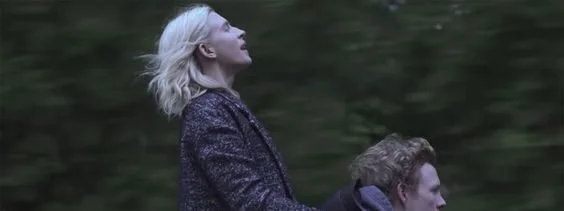Why The OA Cancellation Matters
As of August 5, 2019, Netflix original series The OA was cancelled after two seasons. This surreal science fiction series, created by Brit Marling and Zal Batmanglij, quickly fostered a dedicated following, which turned into an uproar when the news dropped. Flash mobs performed The Movements, an interpretive dance heavily featured in the show, in Times Square,#SavetheOA began to circulate on Twitter, one fan even declared a hunger strike. After the cliffhanger ending of season 2, fans refused to believe the show was over theorizing that the cancellation was a publicity stunt to generate hype for season 3.
Unfortunately, we’ll never see any of the subsequent three seasons Marling and Batmanglij had planned for the series, leaving their audience with a myriad of unanswered questions. The world will never see what bizarre twists and turns the creators had in store.
What makes the OA so compelling, and what makes this cancellation so disappointing is the creators’ bold plot, and willingness to withhold answers from the audience.
The series begins with Prairie Johnson, a blind woman who returns home, seven years after going missing with her sight miraculously restored. As the first season unfolds,Prairie tells the story of how she disappeared, and her mission to cross dimensions in order to save her love interest, Homer.
The pilot episode alone embodies the twisting style of storytelling the showrunners embrace throughout the series. Halfway through the episode, the sombre grey tone shifts into a sweeping cinematic shot of Russia in winter, as Prairie recounts her childhood.
In a show about multi-dimensional travel, creative decisions are boundless, and the unexpected turns of the plot create an enthralling, dream-like atmosphere. Not only is the series deeply addictive, but refreshing. In an interview with Heavy Entertainment, Marling stated “Our chapters vary in length, scope, and even genre. There is no pattern. As a result, at every step along the way nothing can be imitated, it has to be invented.” In the age of sequels and reboots, The OA is original.
All sixteen episodes are immortalized on Netflix, to be rewatched and discovered by at least a handful out of their 153 million subscribers. As one of the first, and most prominent streaming services to date, Netflix is a pioneer in producing original content on an online service. Orange is the New Black, Stranger Things,the list of hits goes on. As of 2018, the service has produced 700 original productions including series and films.
This approach is demonstratively quantity over quality, and profit over innovation. The OA’s cancellation came after an allegedly bad quarter, along with the cancellation of other series such as Jessica Jones, Santa Clarita Diet, and Friends from College. While it is impossible to conclude exactly how Netflix decides what stay and what goes, we have some insight into how originals are produced.
According to Deadline,the Netflix model is to make originals as digestible as possible for binge-viewing, meaning seasons of ten episodes or less, and series under thirty episodes. After that, shows are too expensive to produce, which is why cancellation after two seasons is becoming the trend.
Even if two seasons of something experimental make it to streaming, what kind of process got it there?Netflix at its heart, is a data-based company, and uses an algorithm to dictate the writing process. In an interview with GQ, creator of Netflix series Maniac, Cary Fukunaga, revealed that Netflix anticipates viewership based on their algorithm, and provide feedback on scripts accordingly. Each creative decision is at risk of losing viewership.
With this shift towards quantity and profitability, you have to wonder how this will influence creativity within corporation. Creators may specifically write series with a conclusive two season arc, but consequently that limits concepts like The OA that have a broader vision. The Netflix algorithm is effective, but given the uproar over The OA cancellation,it is clear there is a desire in audiences to see something experimental. How can data anticipate what audiences will respond to, if they haven’t seen it yet?
Although The OA ends forever on a cliffhanger, it is a series worth watching. It breaks the mold of story-telling, and is never afraid to leave the audience scrambling for answers. This series sets a new standard for streaming content, and will hopefully create new opportunity for experimental television in the future. Only time will tell if that content will be on Netflix.
Header Image Source: https://www.popsugar.com/entertainment/When-OA-Season-2-Netflix-45856134
Michelle Boon is a Guest Contributor
to MUSE Online.
want to submit? click here.

